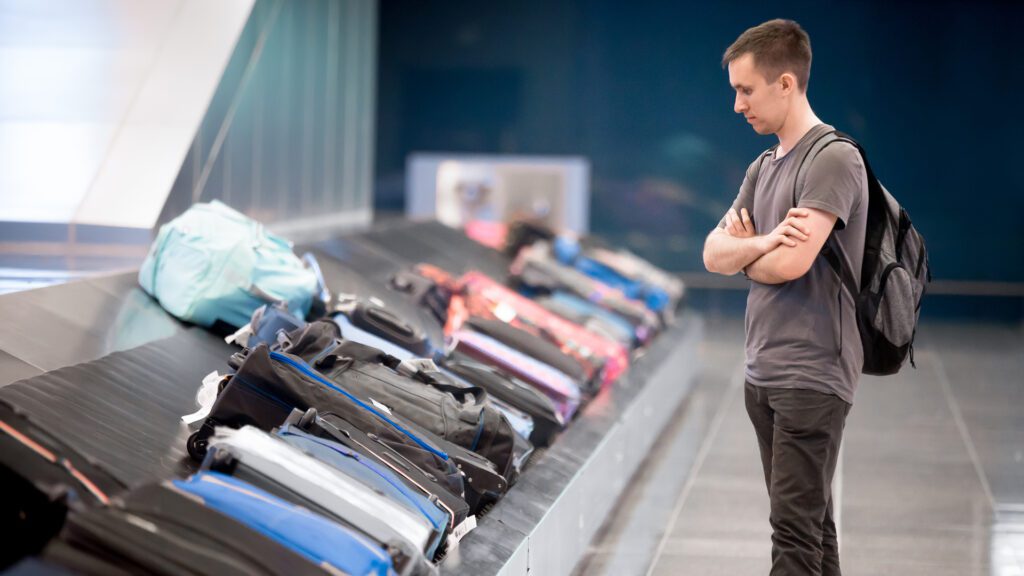LAST YEAR 26 million luggage items were misplaced or lost on flights and in airports.
The experts at 1st Move International have provided six game-changing tips on how you can reduce the risk of lost luggage and what to do if the worst happens.
1 Opt for direct flights over those with a layover
Most baggage losses occur during international flights, especially those with layovers during busy periods, due to the increased risk of transferring baggage from one aircraft to another.
Where possible, take a direct flight to avoid this risk, or if a layover is inevitable, take a longer one. This will give staff more time to transfer baggage and more time means less room for error.
2 Remove old airline stickers and tags from your belongings
It’s easy to forget to remove tags from previous flights, but doing so will make it easier for airline staff to see the most recent tags and not get confused by other labels.
And if your baggage is lost, it will be quicker to get back to you if they can scan it.
3 Use a luggage tag that is sturdy, visible and distinct
With a luggage tag that is both durable and distinct, you’ll be able to locate your belongings after a flight and others will be less likely to mistake your suitcase for their own.
You’ll also make it easier for staff to return lost baggage to you by including up-to-date contact details on your tag.
4 Include a paper version of your details and itinerary in your suitcase
Occasionally, luggage tags fall off or are damaged during transit. In this case, it’s a good idea to keep a paper copy of your contact information and itinerary inside your luggage.

5 Get a GPS luggage tracker
For extra assurance, buying a good-quality GPS tracker can do wonders. Airtags or Tile Mates can be easily stored in your suitcase, allowing you to track its whereabouts from your phone.
Not only will it put you at ease for your flight, but it will also make it easier to find your luggage in the event an airline does lose it.
6 Take a photo of your baggage before check-in
Consider taking a photo of your baggage before checking it in. That way, if your belongings are lost, staff will have a reference image to locate it and ensure it is safely returned.
So, what happens if you are facing the frustration of lost luggage?
“The first thing you should do is immediately report the issue to the airline’s baggage claim officer or customer service desk,” said Mike Harvey, Managing Director at 1st Move International.
“It’s crucial to file a lost baggage report before leaving the airport, as this initiates the tracking process.
“Usually, baggage will be tagged with your flight information, but just in case you’ll want to give the airline a description, be as thorough as possible. How many cases, how big are they, what colour are they and what brand? Every detail helps.
“Next, check your travel insurance policy for coverage in case of lost or delayed baggage and keep receipts for any purchases if you have to replace lost items (even if they might be found later). You may be able to claim these costs back.
“Finally, always try to pack a few days’ worth of essentials in your carry-on just in case of situations like this.”
Virgin Australia has expanded its baggage tracking tool to service all domestic and international routes.
Passengers will receive notifications when their bag is ready to fly, loaded onto the aircraft and again when the luggage has arrived at the baggage carousel.
The first-to-market technology, which launched on the airline’s domestic network last year, has since been used approximately 1.3 million times by Australian travellers, with Virgin Australia (VA) having seen a 12 per cent increase in app downloads.



